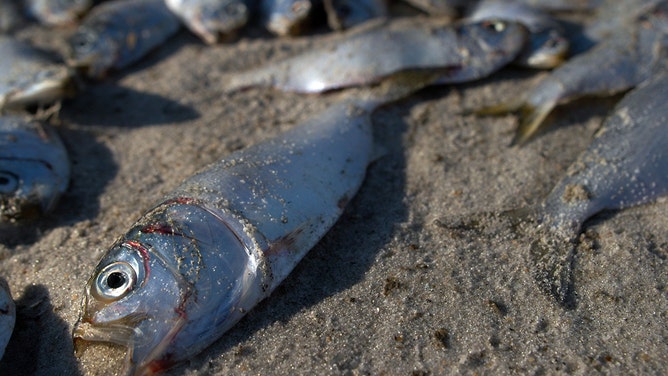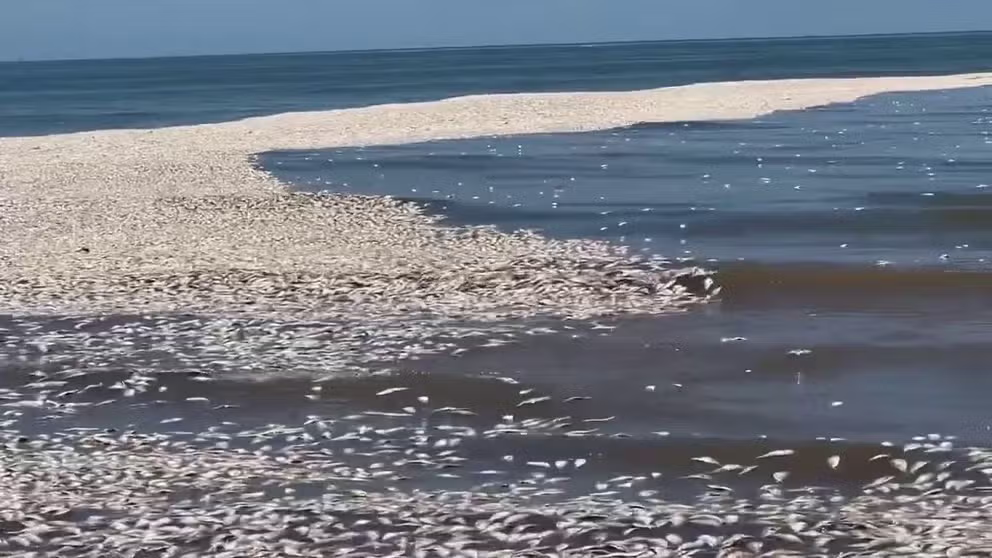Liquid nitrogen fertilizer spill kills nearly 750,000 fish in Iowa river, officials say
The Iowa Department of Natural Resources recommends that individuals refrain from engaging in recreational activities on the East Nishnabotna River and avoid collecting or consuming dead fish found in or around the river.
FILE – Waves of dead fish roll along Texas shore
Footage posted by Quintana Beach County Park shows dead fish being carried by the waves at Bryan Beach due to warming waters, according to local wildlife officials. (Video: Quintana Beach County Park via Storyful)
RED OAK, Iowa – Hundreds of thousands of fish were killed earlier this month in a nearly 50-mile stretch of the East Nishnabotna River to the Missouri border due to a fertilizer spill in Iowa, state officials said.
On March 11, NEW Cooperative, Inc. in Red Oak reported to the Iowa Department of Natural Resources (DNR) that a spill occurred on their Montgomery County premises.
About 1,500 tons (equal to 265,000 gallons) of liquid nitrogen fertilizer (32% solution) was released into a drainage ditch, which subsequently entered the East Nishnabotna River.
The spill happened due to an above-ground storage tank valve that was mistakenly left open over the weekend, the DNR said.
DNR Fisheries staff said the fish kill affected the entire 49.8 miles of the East Nishnabotna and Nishnabotna Rivers downstream of the spill and extended to Missouri’s section of the Nishnabotna River before concluding near the junction with the Missouri River.
USDA AGAIN ASKS FOR HELP SQUASHING THESE INVASIVE BUGS

FILE – Thousands of dead menhaden fish are seen on the beach on December 19, 2005 in Wrightsville Beach, North Carolina.
(Logan Mock-Bunting / Getty Images)
As of Thursday, it was reported that a total of 749,242 fish had been killed, with the most affected species being the minnows, shiners, dace and chubs at 707,871.
Ongoing investigations are being conducted to determine the impact of the fertilizer release on other aquatic life.
According to Iowa state codes, a permit is required to discharge pollutants into a river. The DNR is collaborating with its legal department to determine the next course of action regarding enforcement and restitution for the loss of aquatic life.
According to recent field tests, ammonia levels in the river are showing a decline. However, the DNR still recommends that individuals refrain from engaging in recreational activities on the river and avoid collecting or consuming dead fish found in or around the river.
